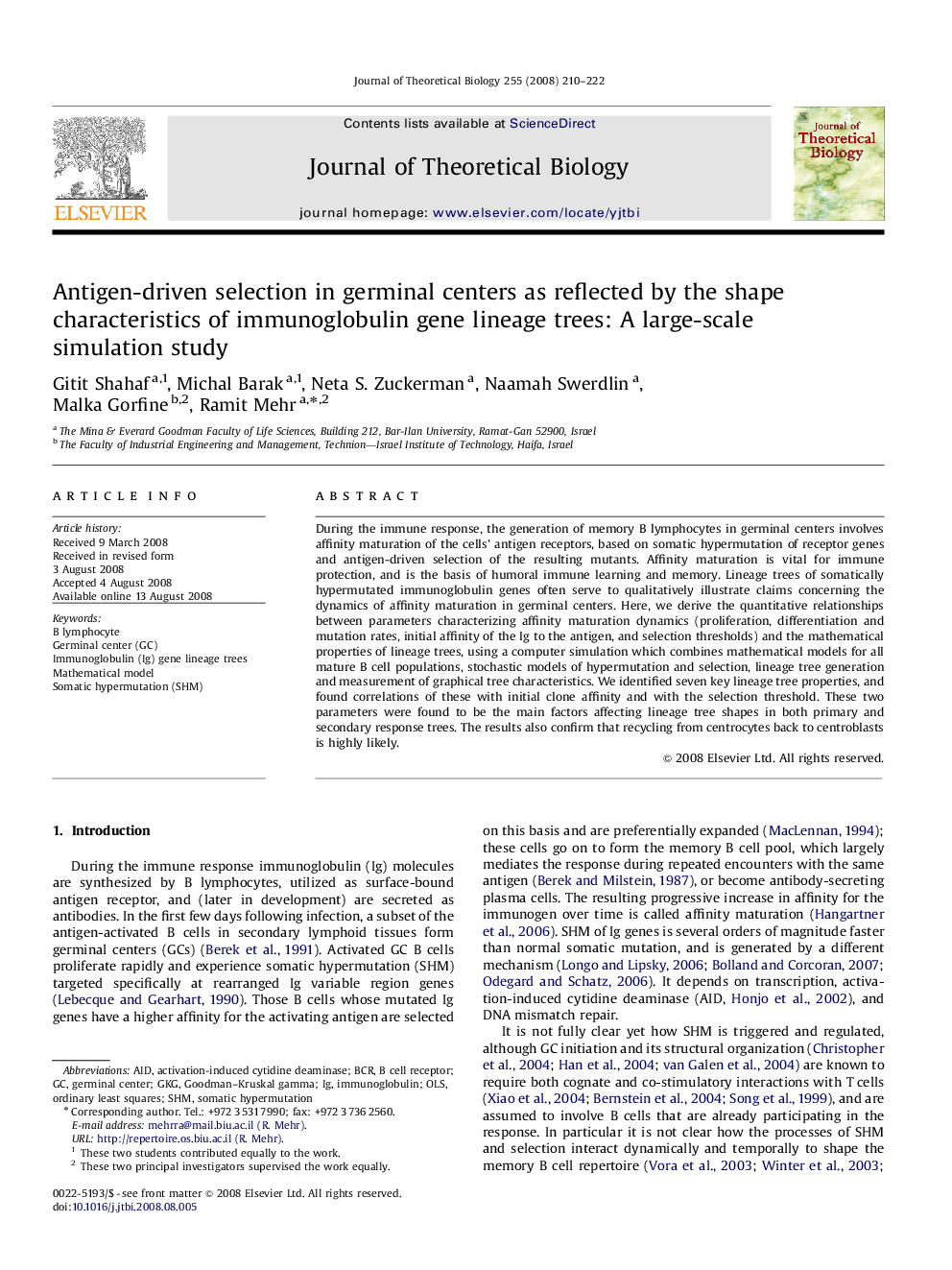| Article ID | Journal | Published Year | Pages | File Type |
|---|---|---|---|---|
| 4498237 | Journal of Theoretical Biology | 2008 | 13 Pages |
During the immune response, the generation of memory B lymphocytes in germinal centers involves affinity maturation of the cells’ antigen receptors, based on somatic hypermutation of receptor genes and antigen-driven selection of the resulting mutants. Affinity maturation is vital for immune protection, and is the basis of humoral immune learning and memory. Lineage trees of somatically hypermutated immunoglobulin genes often serve to qualitatively illustrate claims concerning the dynamics of affinity maturation in germinal centers. Here, we derive the quantitative relationships between parameters characterizing affinity maturation dynamics (proliferation, differentiation and mutation rates, initial affinity of the Ig to the antigen, and selection thresholds) and the mathematical properties of lineage trees, using a computer simulation which combines mathematical models for all mature B cell populations, stochastic models of hypermutation and selection, lineage tree generation and measurement of graphical tree characteristics. We identified seven key lineage tree properties, and found correlations of these with initial clone affinity and with the selection threshold. These two parameters were found to be the main factors affecting lineage tree shapes in both primary and secondary response trees. The results also confirm that recycling from centrocytes back to centroblasts is highly likely.
